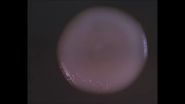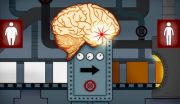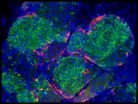(Press-News.org) (SALT LAKE CITY)—A University of Utah-led study using X-rays and neutron beams has revealed the inner workings of a master switch that regulates basic cellular functions, but that also, when mutated, contributes to cancer, cardiovascular disease and other deadly disorders.
Learning more about how the Protein Kinase A (PKA) switch works will help researchers to understand cellular function and disease, according to Donald K. Blumenthal, Ph.D., associate professor of pharmacology and toxicology at the University of Utah (U of U) College of Pharmacy who led the study. "To develop new drugs and treatments for disease, it's important to understand how PKA works," he says. "This study helps us get a clearer picture of how the PKA protein helps regulate cellular function and disease."
The study, published in the Oct. 10 issue of the Journal of Biological Chemistry as its paper of the week, is a collaboration among researchers at the U of U, University of California, San Diego (UCSD), and Oak Ridge National Laboratory in Tennessee.
The PKA protein comes in four forms, each of which serves as a sensor for a signaling molecule called cyclic AMP (cAMP). When these forms of PKA sense cAMP, they change shape, which researchers believe is critical in determining how PKA works as a biochemical switch. Many hormones, neurotransmitters and drugs communicate with cells by changing the level of cAMP found within them. Accordingly, PKA helps regulate cellular activity in reaction to different levels of cAMP within cells. Because PKA serves as a master switch in cells, mutations in it lead to a variety of diseases including metabolic disorder, disorders of the brain and nervous system, cancer and cardiovascular ills.
Blumenthal and colleagues focused on a form of PKA called II-beta, a protein found mostly in the brain and fat cells that is suspected of being involved in obesity and diet-induced insulin-resistance associated with type 2 diabetes. II-beta contains two mechanisms for sensing cAMP, each of which unfolds and separates in response to the signaling molecule.
The researchers wanted to know whether both of II-beta's cAMP-sensing mechanisms are required to determine its ability to change shape – a critical factor for its function. To answer this, they removed one of the cAMP sensors and used advanced small-angle neutron scattering imaging, a technology available at Oak Ridge's High Flux Isotope Reactor, and small-angle X-ray scattering at the U of U, each of which produces images that reveal information about the shape and size of molecules. The images showed that II-beta does, indeed, change shape with only one sensor.
"By process of elimination, this must mean that parts of the remaining single sensor of II-beta give it its unique shape and internal architecture," says Susan Taylor, Ph.D., professor of chemistry, biochemistry and pharmacology at UCSD and co-author on the study. "Our findings further narrow and define the key components of II-beta and identify new regions for further study."
Future research should focus on a part of II-beta called the "linker region," which connects the remaining cAMP sensor with a part of II-beta that helps target PKA to specific cell locations, according to Blumenthal. "Based on what we know about II-beta and other forms of PKA, it's likely that the linker region plays a major role in organizing the internal architecture and shape changes the determine the unique biological functions of PKA."
INFORMATION:
The study's co-authors include Jeffrey Copps, Eric V. Smith-Nguyen and Ping Zhang, UCSD Department of Chemistry and Biochemistry and Howard Hughes Medical Institute and William T. Heller, Oak Ridge National Laboratory.
Funding support for this research came, in part, from the U.S. Department of Energy and the National Institutes of Health (grant GM34921).
A supernova is the cataclysmic death of a star, but it seems its remnants shine on. Astronomers have found a pulsating, dead star beaming with the energy of about 10 million suns.
This is the brightest pulsar -- a dense stellar remnant leftover from a supernova -- ever recorded, and was seen using NASA's Nuclear Spectroscopic Telescope Array, or NuSTAR.
Lawrence Livermore LLNL researchers were involved in the design and testing of the NuSTAR X-ray optics.
"You might think of this pulsar as the 'Mighty Mouse' of stellar remnants," said Fiona Harrison, the NuSTAR principal ...
NASA's Aqua satellite passed over Super Typhoon Vongfong as it tracked through the Philippine Sea on Oct. 9. Instrument aboard Aqua captured visible and infrared images of the now Category 4 Super Typhoon.
Two instruments aboard NASA's Aqua satellite provided visible and infrared data on the Super Typhoon: The Moderate Resolution Imaging Spectroradiometer or MODIS and the Atmospheric Infrared Sounder or AIRS instrument, respectively. MODIS captured a visible image of Super Typhoon Vongfong on Oct. 9 at 04:25 UTC (12:25 a.m. EDT) that showed two concentric eyewalls with ...
Neurodevelopmental disorders such as Down syndrome and autism-spectrum disorder can have profound, lifelong effects on learning and memory, but relatively little is known about the molecular pathways affected by these diseases. A study published by Cell Press October 9th in the American Journal of Human Genetics shows that neurodevelopmental disorders caused by distinct genetic mutations produce similar molecular effects in cells, suggesting that a one-size-fits-all therapeutic approach could be effective for conditions ranging from seizures to attention-deficit hyperactivity ...
VIDEO:
Behavior experiments in which flies were given the choice between wild-type and mutant fermentation headspace in the middle of the experiment, and they migrate accordingly.
Click here for more information.
The familiar smell of beer is due in part to aroma compounds produced by common brewer's yeast. Now, researchers reporting in the Cell Press journal Cell Reports on October 9th have discovered why the yeast (formally known as S. cerevisiae) make that smell: the scent attracts ...
Oxytocin has been called the "love hormone" because it plays an important role in social behaviors, such as maternal care and pair bonding. In a study published by Cell Press on October 9th in the journal Cell, researchers uncover oxytocin-responsive brain cells that are necessary for female social interest in male mice during estrus—the sexually receptive phase of their cycle. These neurons, found in the prefrontal cortex, may play a role in other oxytocin-related social behaviors such as intimacy, love, or mother-child bonding.
"Our findings suggest that social ...
Oxytocin, the body's natural love potion, helps couples fall in love, makes mothers bond with their babies, and encourages teams to work together. Now new research at Rockefeller University reveals a mechanism by which this prosocial hormone has its effect on interactions between the sexes, at least in certain situations. The key, it turns out, is a newly discovered class of brain cells.
"By identifying a new population of neurons activated by oxytocin, we have uncovered one way this chemical signal influences interactions between male and female mice," says Nathaniel ...
Researchers at Yale School of Medicine have uncovered a molecular process in the brain known to control eating that transforms white fat into brown fat. This process impacts how much energy we burn and how much weight we can lose. The results are published in the Oct. 9 issue of the journal Cell.
Obesity is a rising global epidemic. Excess fatty tissue is a major risk factor for type 2 diabetes, cardiovascular disease, hypertension, neurological disorders, and cancer. People become overweight and obese when energy intake exceeds energy expenditure, and excess calories ...
Harvard stem cell researchers today announced that they have made a giant leap forward in the quest to find a truly effective treatment for type 1 diabetes, a condition that affects an estimated three million Americans at a cost of about $15 billion annually:
With human embryonic stem cells as a starting point, the scientists are for the first time able to produce, in the kind of massive quantities needed for cell transplantation and pharmaceutical purposes, human insulin-producing beta cells equivalent in most every way to normally functioning beta cells.
Doug Melton, ...
CAMBRIDGE, Mass. (October 9, 2014) – Within almost every human cell is a nucleus six microns in diameter—about one 300th of a human hair's width—that is filled with roughly three meters of DNA. As the instructions for all cell processes, the DNA must be accessible to the cell's transcription machinery yet be compressed tightly enough to fit inside the nucleus. Scientists have long theorized that the way DNA is packaged affects gene expression. Whitehead Institute researchers present the first evidence that DNA scaffolding is responsible for enhancing and ...
BOSTON – The surprising discovery of a previously unidentified class of lipid molecules that enhance insulin sensitivity and blood sugar control offers a promising new avenue for the prevention and treatment of type 2 diabetes.
The new findings, made by a team of scientists from Beth Israel Deaconess Medical Center (BIDMC) and the Salk Institute, are described in the October 9 online issue of the journal Cell.
"We were blown away to discover this completely new class of molecules," says senior author Barbara Kahn, MD, Vice Chair of the Department of Medicine ...




